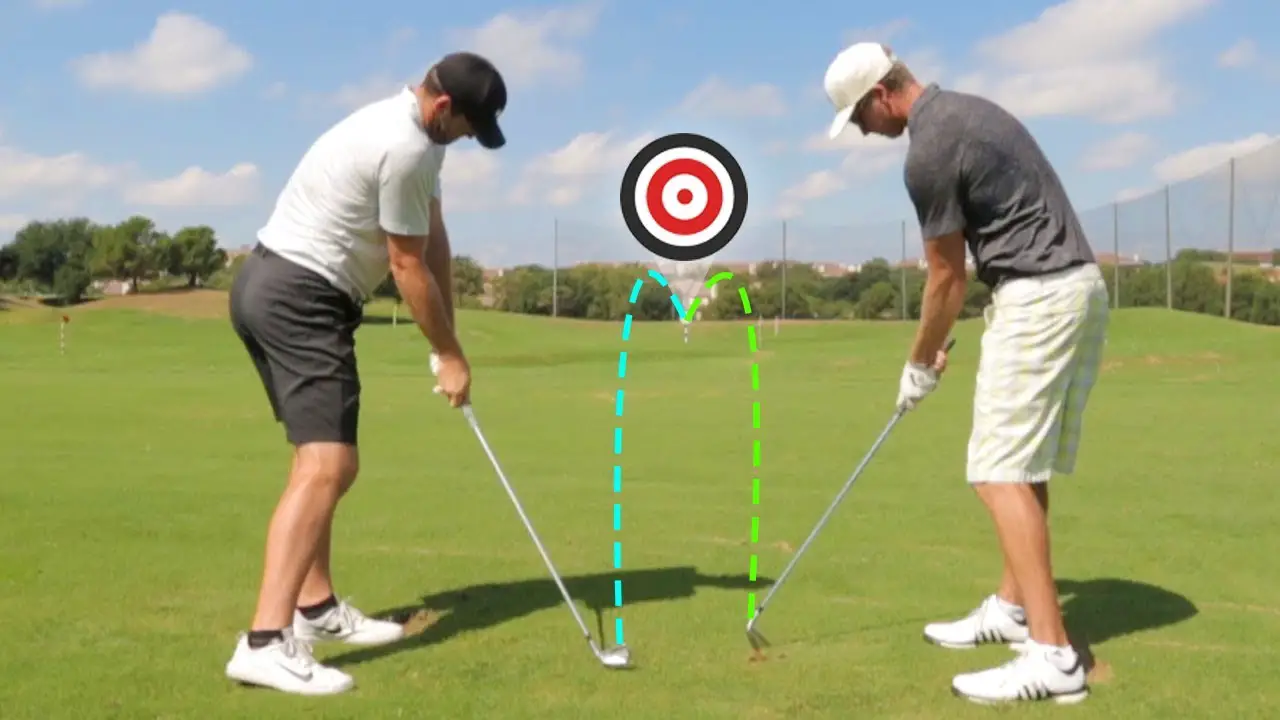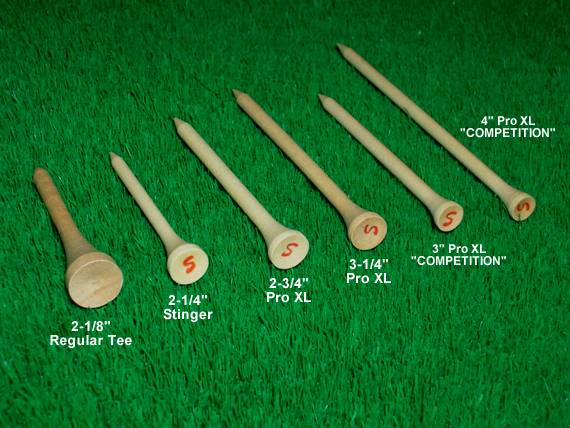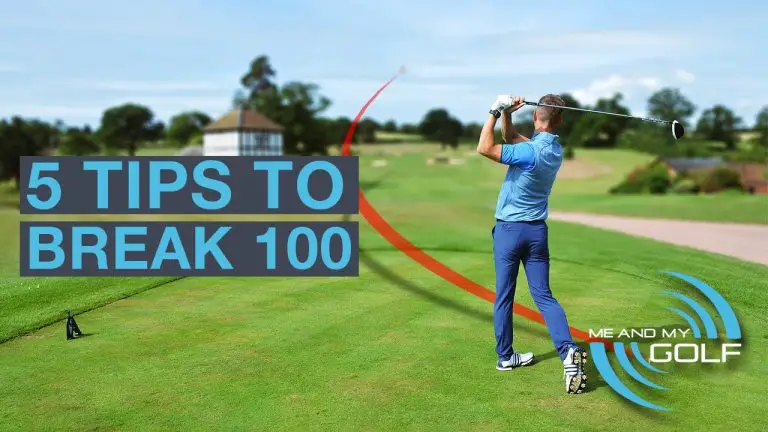What Is A Stinger In Golf

In the world of golf, there are shots that captivate the imagination and leave spectators in awe. Among them is the stinger, a shot known for its low trajectory, penetrating ball flight, and exceptional control. Golfers who can execute the stinger with precision have a powerful tool at their disposal, allowing them to navigate challenging conditions and showcase their mastery of the game.
But what exactly is a stinger in golf, and how can you incorporate it into your repertoire? In this article, we will delve into the intricacies of the stinger, unlocking its secrets and guiding you on a path to mastering this impressive shot.
The stinger is a shot that defies convention. Instead of soaring high into the sky, it skims just above the ground, hugging the fairway with a purposeful intent. The ball launches on a low trajectory, penetrating through the air with minimal spin and maximum control. It is a shot that demands precision, technique, and a deep understanding of the swing dynamics.
In the following sections, we will explore the technique and mechanics behind the stinger, providing practical tips and drills to help you develop the necessary skills. We will discuss its applications on the course, the benefits it brings, and when to strategically deploy this shot. Additionally, we’ll delve into the notable players who have mastered the art of the stinger, drawing inspiration from their expertise.
Join us on this journey as we demystify the stinger and unlock the keys to control and precision in your golf game. Get ready to elevate your skills, impress your playing partners, and experience the satisfaction of executing a well-struck stinger shot.

What is a stinger shot?
A stinger shot is a specific type of golf shot known for its low trajectory and penetrating ball flight. It is characterized by a controlled, piercing strike that produces minimal spin and maximum roll upon landing. The stinger shot is achieved by intentionally de-lofting the club and striking the ball with a slightly descending blow.
Unlike a regular golf shot that aims for height and carry, the stinger shot focuses on distance, accuracy, and the ability to navigate challenging course conditions. It is often used in windy conditions, tight fairways, or to avoid obstacles such as tree canopies or low-hanging branches.
How to execute a stinger shot
Executing a stinger shot requires proper technique, precise ball positioning, and a focused mindset. Let’s break down the key elements of a stinger shot:
Proper setup and address position
Setting up correctly is essential for a successful stinger shot. Here’s what you need to consider:
- Ball position: Place the golf ball slightly back in your stance, closer to your trailing foot. This promotes a downward strike and imparts a lower trajectory on the shot.
- Narrow stance: Adopt a slightly narrower stance than usual to encourage a more controlled swing and enhance balance throughout the shot.
- Hands slightly ahead: Position your hands slightly ahead of the ball at address. This helps ensure a downward strike and promotes a lower launch angle.
Technique and swing mechanics
To execute a stinger shot, focus on the following technique and swing mechanics:
- Club selection: Opt for a club with less loft, such as a long iron or a low-lofted driving iron. These clubs naturally produce a lower ball flight, making them ideal for stinger shots.
- Modified swing path: On the downswing, slightly “trap” the ball by delivering a descending blow. This promotes a compressed strike and imparts lower spin on the ball.
- Reduced follow-through: Limit your follow-through compared to a regular swing. A shorter follow-through helps control the trajectory and promotes a lower ball flight.
- Clubface control: Maintain a square clubface throughout the swing to ensure a straight and penetrating shot. Avoid flipping the clubface closed or open during impact.
Tips and drills to practice the stinger shot
Here are some tips and drills to help you practice and refine your stinger shot:
- Start with partial swings: Begin by practicing stinger shots with shorter swings to get a feel for the technique and ball flight. Gradually increase the swing length as you gain confidence.
- Focus on rhythm and tempo: Emphasize smooth, controlled swings with a consistent tempo. This helps maintain the desired ball flight and prevents rushed or jerky movements.
- Visualize the trajectory: Imagine the desired low, penetrating flight path before each shot. Visualization can help reinforce the proper technique and enhance your ability to execute the stinger shot.
- Experiment with different clubs: Explore different clubs and their respective lofts to find the one that suits your swing and desired ball flight the best. Each player’s preference may vary, so don’t be afraid to experiment.
Remember, practicing the stinger shot requires patience and persistence. Take the time to develop a feel for the technique and gradually incorporate it into your game.
Benefits and applications of a stinger shot
The stinger shot offers several benefits and applications that can elevate your performance on the course. Let’s explore them:
Increased control and accuracy in windy conditions
One of the primary advantages of a stinger shot is its ability to combat windy conditions. The low trajectory reduces the impact of the wind, allowing for greater control and accuracy. Whether playing in a coastal breeze or gusty inland conditions, the stinger shot provides a reliable option to keep the ball flight under the wind’s influence.
Lower ball flight for maximum distance and roll
The stinger shot’s lower ball flight provides another significant benefit – increased distance and roll. By minimizing the launch angle and spin, the ball travels on a flatter trajectory, maximizing its time in the air and resulting in additional yards off the tee or fairway. The lower ball flight also enhances the potential for extra roll upon landing, leading to added distance on your shots.
Versatility for navigating tight fairways and avoiding obstacles
Tight fairways and narrow landing areas can present a challenge for golfers. The stinger shot offers a versatile solution by allowing you to navigate these demanding situations with precision. Its low trajectory and controlled nature enable you to keep the ball in play and avoid hazards such as overhanging branches, tree canopies, or strategically placed bunkers.
Whether you need to thread the ball through a tight gap or lay up strategically on a challenging par 4, the stinger shot provides you with the necessary control and accuracy.
When to use a stinger shot
Knowing when to employ a stinger shot can greatly enhance your decision-making on the course. Let’s explore some situations where a stinger shot can be advantageous:
Tee shots on narrow fairways
On holes with tight fairways or doglegs, a stinger shot off the tee can help you find the narrow landing area. The low trajectory and accuracy of the stinger reduce the chance of the ball straying into the rough or hazards, setting up a more favorable approach to the green.
Approaches under tree canopies or low-hanging obstacles
When facing an approach shot obstructed by tree canopies or low-hanging obstacles, the stinger shot allows you to keep the ball below the obstruction and reach the target. By executing a controlled stinger, you can navigate these challenging situations with confidence and avoid potential trouble.
Windy conditions and crosswinds
In windy conditions, a stinger shot becomes a valuable asset. The lower ball flight helps counteract the effects of crosswinds, enabling you to maintain control and accuracy. When faced with gusty conditions, employing a stinger shot can help you mitigate the wind’s impact and keep the ball on the intended line.
Assessing the risks and rewards of using a stinger shot is crucial. Evaluate the course layout, wind conditions, and potential landing areas to determine if the stinger shot is the best option for your game strategy.
Notable players known for their stinger shots
Throughout golf history, several players have become renowned for their exceptional stinger shots. Let’s explore a few notable players and their contributions to popularizing the stinger:
Tiger Woods
Tiger Woods is arguably the most famous proponent of the stinger shot. His ability to consistently execute the shot with precision and control has amazed fans and fellow professionals alike. Woods’ stinger shots have been a key weapon in his arsenal, allowing him to navigate challenging courses and windy conditions with confidence.
Justin Thomas
Justin Thomas is another player known for his proficiency with the stinger shot. His ability to hit controlled low shots has contributed to his success on demanding courses, earning him victories in major championships and elite tournaments. Thomas’ stinger shot showcases the effectiveness of this technique in modern golf.
Other notable players
Many other professional golfers, including Rory McIlroy, Henrik Stenson, and Sergio Garcia, have showcased their mastery of the stinger shot. Each player brings their unique style and technique to the shot, demonstrating its adaptability to different swings and playing styles.
By studying these players’ techniques and incorporating elements into your own game, you can enhance your understanding of the stinger shot and refine your execution.
Adjusting and adapting the stinger shot
While the basic technique of the stinger shot remains consistent, there are adjustments and variations that can be made to suit different clubs, distances, and playing conditions. Let’s explore some ways to adjust and adapt the stinger shot:
Modifying the stinger for different clubs and distances
The stinger shot can be executed with various clubs, depending on the desired distance and circumstances. While long irons and driving irons are popular choices, you can experiment with hybrids or even fairway woods to achieve the desired ball flight. Adjusting the club selection allows you to adapt the stinger shot to different situations and distances.
Applying variations to the stinger technique based on playing conditions
To optimize the stinger shot’s effectiveness, consider making specific adjustments based on playing conditions:
- Altering ball position and club selection: Depending on wind direction and strength, you may need to modify the ball position and select a club that produces the desired trajectory. Experiment with moving the ball slightly forward or back in your stance to adjust the launch angle.
- Adjusting swing speed and angle of attack: Adapting your swing speed and angle of attack can influence the ball flight. In windy conditions, a smoother swing with a shallower angle of attack can help you maintain control and achieve the desired stinger shot.
By making these adjustments and adapting the stinger shot to different situations, you can optimize its effectiveness and confidently navigate various course conditions.
Conclusion
The stinger shot is a remarkable technique that offers golfers increased control, precision, and the ability to handle challenging conditions. By mastering this low, penetrating ball flight, you can enhance your game and elevate your performance on the course. Practice the technique, experiment with different clubs and variations, and incorporate the stinger shot strategically into your game. Embrace the power and precision of the stinger, and watch as your game reaches new heights of control and success.





